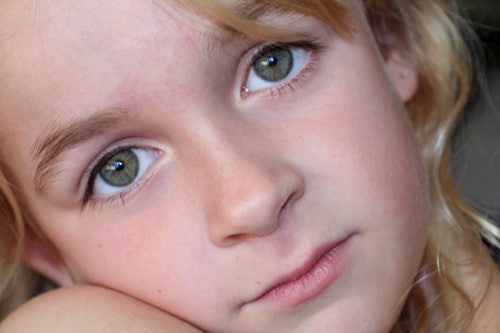Self-Directed Violence and Other Forms of Self-Injury
Self-directed violence and other forms of self-injury are serious problems that affect children, youth, and families. However, there are things that families and health professionals can do to help prevent these behaviors.

Self-Directed Violence
The Centers for Disease Control (CDC) defines self-directed violence as anything a person does intentionally that can cause injury to self, including death, For example:
- Cutting
- Suicide
CDC notes that these factors increase the risk of youth suicide:
- History of previous suicide attempts
- Family history of suicide
- History of depression or other mental illness
- Alcohol or drug abuse
- Stressful life event or loss
- Easy access to lethal methods
- Exposure to the suicidal behavior of others
Find more information about suicide.
Other forms of Self-Injury
Other forms of self-injury can also cause harm to self, including death. These behaviors may be unintentional in nature. They are often repetitive and occur in response to something in the environment1. Other forms of self-injury include
- Head banging,
- Self-biting, and
- Self-scratching.
There may be multiple and unique causes of self-injury for each child. For one child the cause might be poor communication skills. For another child the cause might be a medical condition. It is important to try to understand the cause(s) of the behavior so that treatment will be more effective.
Children and Youth with Disabilities
Children and youth with developmental disabilities, such as autism and intellectual disability, are more likely to engage in other forms of self-injury than children without these disabilities1,2,3. Youth with depression, anxiety disorder, and conduct disorder have a higher chance of self-violence, including suicide, than children without these disorders4.
It is important to understand the reasons for self-directed violence and other forms of self-injury among children with disabilities in order to find the best treatment. It is also important to coordinate care given by family, school, and healthcare providers.
What Can We Do for Children and Youth?
Families
Contact your health professional if your child attempts self-directed violence or engages in other forms of self-injury. One way to prevent these behaviors is to understand what causes the child to do the behavior. These causes will be different for each person, so finding the cause and best treatment will be different for each child.
Healthcare Professionals
As a healthcare professional, you have an important role in preventing self-directed violence and other forms of self-injury. Health professionals can help prevent these behaviors by
- Asking about known factors that increase the chance that these behaviors will occur by talking to patients;
- Learning about different assessment tools for depression and suicide risk;
- Considering a variety of causes (for example, emotional, environmental, and medical);
- Recommending interventions to address the needs of the individual child and family.
Resources
http://www.autismspeaks.org/family-services/tool-kits/challenging-behaviors-tool-kitexternal icon
Autism Speaks is a major U.S. autism advocacy organization. Autism Speaks developed a Challenging Behaviors Tool Kit to support families. This Tool Kit includes discussion of self-harm.
https://www.autism.org.uk/about/behaviour/challenging-behaviour/self-injury.aspxexternal icon
The National Autistic Society is a leading U.K. charity for people with autism and their families. The National Autistic Society has developed a series of web pages to help families understand and prevent self-harm.
https://www.cdc.gov/ViolencePrevention/suicide/index.html
The mission of the Division of Violence Prevention at the Centers for Disease Control and Prevention (CDC) is to prevent injuries and deaths caused by violence. Suicide is one of the areas addressed by the CDC Division of Violence Prevention.
https://www.mentalhealth.gov/what-to-look-for/suicidal-behaviorexternal icon.
MentalHealth.gov provides one-stop access to information mental health and mental health problems information, including suicidal behavior.
http://www.nimh.nih.gov/health/topics/suicide-prevention/index.shtmlexternal icon
http://www.samhsa.gov/prevention/suicide.aspxexternal icon.
One of the goals of The National Institute of Mental Health and Substance Abuse and Mental Health Services Administration is to provide health education to families and professionals on a variety of issues, including suicide prevention.
http://www.suicidepreventionlifeline.org/external icon or 800-273-8255
The National Suicide Prevention Lifeline provides free and confidential emotional support to people in suicidal crisis or emotional distress 24 hours a day, 7 days a week.
References
- Schroeder, S.R., Oster-Granite, M.L., and Thompson, T. (Eds.) (2002). Self-injurious behavior: Gene-brain-behavior relationships. Washington, D.C.: American Psychological Association.
- Richards, C., Oliver, C., Nelson, L., & Moss, J. (2012). Self-injurious behaviour in individuals with autism spectrum disorder and intellectual disability. Journal of Intellectual Disabilities Research, 56, 476-489.
- G. N. Soke, S.A. Rosenberg, R.F. Hamman, T. Fingerlin, C. Robinson, L. Carpenter,
E. Giarelli, L-C. Lee, L. D. Wiggins, M.S. Durkin, C. DiGuiseppi. Prevalence of Self-injurious Behaviors among Children with Autism Spectrum Disorder—A Population-Based Study. Journal of Autism and Developmental Disorders. 2016. [View Key Finding] - Meltzer, H., Harrington, R., Goodman, R., Jenkins, R. (2001) Children and adolescents who try to harm, hurt or kill, themselves, National Statistics: London

